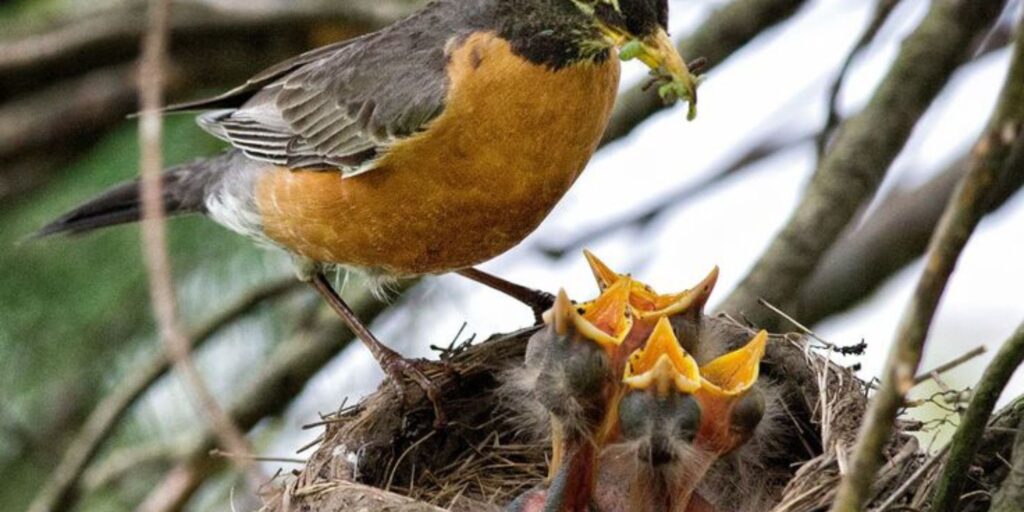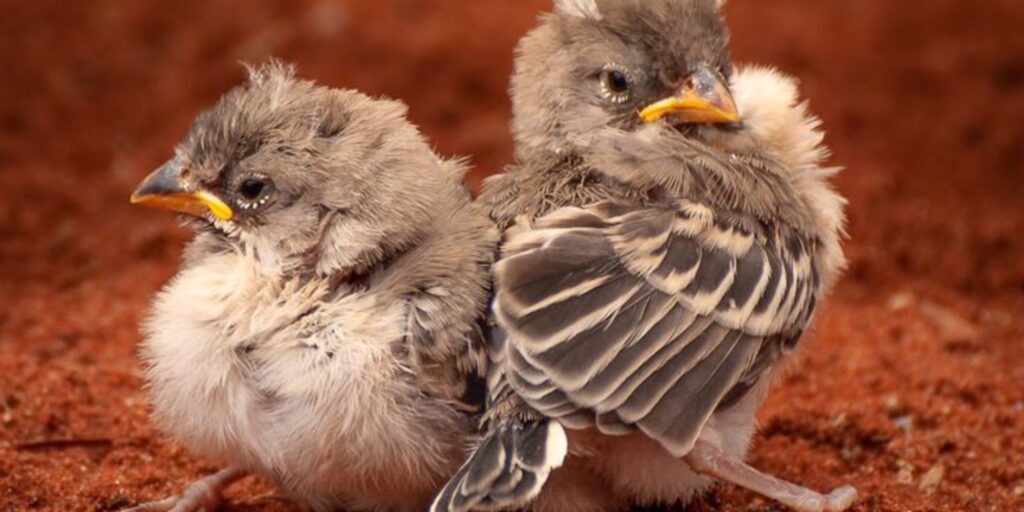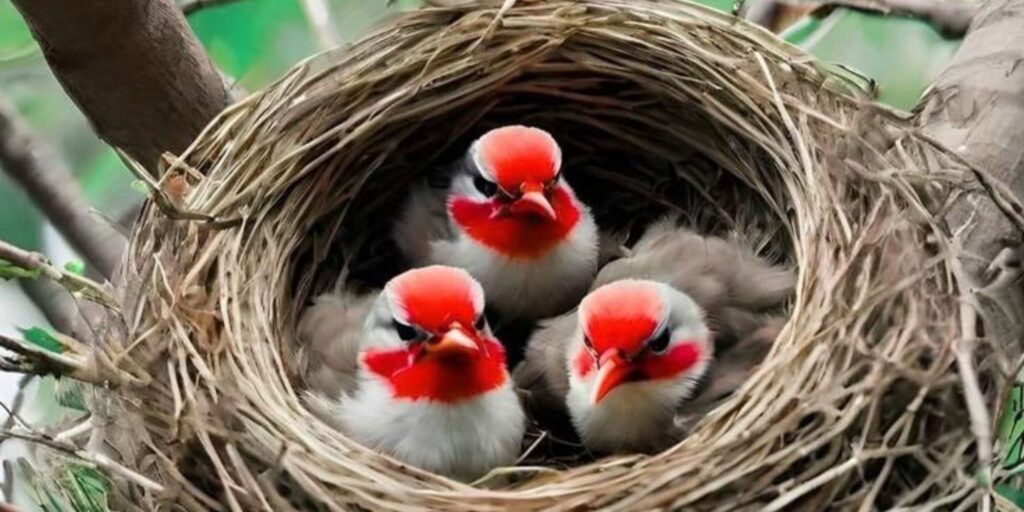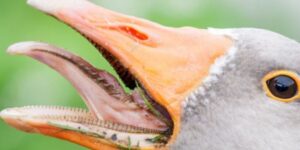Introduction
Baby birds are some of nature’s most delightful wonders. Their delicate features, soft chirps, and curious eyes can melt anyone’s heart. As birdwatchers or animal lovers, encountering a baby bird can spark joy but also raise questions about how to care for them properly. Whether you find one that has fallen from its nest or see fledglings exploring their surroundings, knowing how to respond is essential. This guide offers valuable tips on assessing and caring for baby birds while ensuring their safety and well-being in the wild. Let’s dive into the fascinating world of these adorable creatures!
Caring for Baby Birds: Tips for Birdwatchers and Animal Lovers

Caring for baby birds requires knowledge and compassion. When you encounter one, approach gently to avoid overwhelming them. Keep an eye out for signs of distress or injury.
It’s crucial to distinguish between nestlings and fledglings. Nestlings are still dependent on their parents, while fledglings are learning to fly but may need assistance if grounded.
If you decide to help a baby bird, provide warmth and shelter until it can return home safely. Avoid handling them too much; your scent could deter the parents from returning. Remember that sometimes, leaving them alone is the best option for their survival in nature’s embrace.
Assessing and Caring for Baby Birds
When you come across a baby bird, the first step is to assess its condition. Look for signs of injury or distress, such as bleeding or an inability to stand. If it appears healthy but alone, it may just be exploring.
Understanding whether the bird is a nestling or fledgling is crucial for proper care. Nestlings are featherless and rely on their parents. Fledglings have some feathers and can hop around; they still need parental support.
If you determine that the baby bird needs help, contact a local wildlife rehabilitator. They can provide expert guidance tailored to the specific situation you’re facing with your young avian friend.
Determining the Bird’s Condition
When you encounter a baby bird, the first step is to assess its condition. Look for visible injuries such as wounds or broken wings. Observe if the bird is alert and responsive. A healthy baby bird should react to sounds and movement.
Check for signs of distress like fluffed feathers or lethargy. These can indicate illness or dehydration. If the bird appears weak, it may need immediate care.
Additionally, consider its environment. Is it in danger from predators or harsh weather? Understanding these factors will guide your next steps in providing appropriate help for the little creature.
Baby Birds :Differentiating Nestlings and Fledglings
Nestlings and fledglings represent different stages in a baby bird’s life. Nestlings are typically those that haven’t developed feathers yet, relying entirely on their parents for warmth and food. They usually remain in the nest until they can grow strong enough to leave.
Fledglings, on the other hand, have started to develop feathers and may even be attempting short flights. They often perch near their nests while still depending on parental care for survival.
Understanding these distinctions helps you provide better support when encountering young birds in your backyard or local parks. Knowing what stage they’re at is crucial before taking any action.
Baby Birds :Providing the Appropriate Care
Caring for a baby bird requires understanding its specific needs. If you find a nestling, it often needs warmth and frequent feeding. A mixture of soft food like moistened cat or dog kibble can work well.
For fledglings, they’re starting to explore their surroundings but may still need support. Offer them water and occasional food while ensuring they have safe spaces to practice flying.
Always use clean hands when handling the little ones. The stress of human interaction can be overwhelming for these fragile creatures, so keep handling to a minimum unless necessary for care.
Interactions with Baby Birds
Interactions with baby birds can be magical moments for any bird lover. However, it’s essential to approach these encounters with care and respect. Baby birds are often vulnerable and need time to grow strong.
If you spot a baby bird, observe it from a distance first. This allows you to gauge its behavior without causing stress. Remember that some species prefer minimal human interaction while others may seem more curious.
If handling is necessary, use gentle hands and keep the contact brief. Always prioritize their well-being over your desire for connection. Your goal should be to support their instincts as they develop into independent flyers.
Understanding Bird Behavior
Understanding bird behavior is essential when caring for baby birds. Each species has unique habits and social structures that dictate how they interact with their environment. Observing these behaviors helps you provide the right care.
Baby birds communicate through chirps and movements to signal their needs. Recognizing these cues can enhance your ability to respond appropriately, ensuring they feel secure.
Additionally, knowing when a baby bird is stressed or scared can prevent unnecessary handling. It’s important to give them space while still offering support from a safe distance as they learn about the world around them.
How to Help Grounded Birds
If you find a grounded baby bird, observe it from a distance first. Make sure it’s truly in need of help and not just resting or learning to fly. Watch for signs of distress or injury.
If the bird appears injured, gently approach while being cautious. Use a soft cloth or gloves to pick it up safely. Place it in a small, ventilated box lined with soft material like tissue paper.
Keep the bird in a quiet, warm location away from pets and people. This helps reduce stress as you decide whether to contact a wildlife rehabilitator for further assistance.
Importance of Leaving Birds Alone
Many people feel compelled to help baby birds they encounter. However, it’s essential to recognize that many species thrive best in their natural environment. Interfering with them can cause more harm than good.
Parent birds often watch from a distance, ready to return once it’s safe. Disturbing these nests or handling young birds may scare the parents away and disrupt vital feeding routines.
Most baby birds have built-in survival skills. They instinctively know how to hide and stay quiet when threatened. Observing from afar allows nature to take its course while ensuring the well-being of these vulnerable creatures.
Supporting Local Bird Populations
Supporting local bird populations is vital for a healthy ecosystem. Simple actions can make a significant difference in their survival. Create bird-friendly spaces by planting native plants and providing clean water sources.
Participate in community initiatives that promote habitat restoration. Join or support local conservation groups focused on protecting birds and their environments. Your involvement helps preserve natural habitats and ensures the future of many species.
Educating others about the importance of birds fosters appreciation and encourages responsible behaviors. Share your knowledge with friends, family, and neighbors to create a ripple effect that benefits these incredible creatures in your area.
Tips for Protecting Baby Birds

To protect baby birds, start by creating a safe environment in your yard. Avoid using pesticides and chemicals that can harm them or their food sources. Native plants provide natural shelter and attract insects for nourishment.
Keep cats indoors to prevent predation on vulnerable nestlings and fledglings. If you have outdoor pets, supervise their time outside to minimize risks to local bird populations.
Avoid disturbing nests if you find them in your garden or nearby trees. Observing from a distance ensures that parents can care for their young without unnecessary stress. Every little effort counts toward safeguarding these fragile lives.
Legal Considerations for Bird Care
When caring for baby birds, it’s essential to be aware of legal considerations. Many countries have laws protecting native bird species. Taking a baby bird from the wild without permission can lead to hefty fines or other penalties.
Permits may be required if you plan to rehabilitate or keep a wild bird. Always research local regulations before intervening in their care.
Moreover, understanding these laws helps ensure that your actions support conservation efforts rather than hinder them. Being informed keeps both you and the birds safe while promoting responsible interactions with wildlife.
Engaging with Wildlife Rehabilitation
Engaging with wildlife rehabilitation is a rewarding experience for anyone who loves animals. Many organizations focus on rescuing and rehabilitating injured or orphaned birds, including baby birds. Volunteering your time can provide hands-on learning while making a positive impact.
You can also support these efforts through donations or by attending fundraising events. These initiatives often rely heavily on community involvement to succeed in their missions.
Additionally, consider educating yourself about local wildlife laws and best practices in bird care. Being knowledgeable empowers you to help effectively when needed while promoting the well-being of our feathered friends.
Knowing When to Seek Professional Help
Sometimes, caring for a baby bird exceeds basic knowledge or skills. If you notice signs of severe injury, illness, or distress, seeking professional help is crucial. These situations can be complex and require specialized care.
Look for symptoms like bleeding, difficulty breathing, or unresponsiveness. A wildlife rehabilitator has the expertise to assess and treat these conditions effectively. They know how to handle different species safely.
If you’re uncertain about the proper steps to take with a baby bird in distress, don’t hesitate to reach out for advice from local experts. Their guidance can make all the difference in ensuring the bird’s well-being.
Preparing and Transporting Injured Birds
When you encounter an injured baby bird, it’s crucial to handle it with care. Start by gently placing the bird in a small, well-ventilated box or container lined with soft materials like cloth or paper towels. This provides comfort and reduces stress.
Keep the environment quiet and warm during transport. Avoid direct sunlight and drafts; both can exacerbate its condition. If possible, cover the box lightly with a breathable fabric to help keep the bird calm.
Drive carefully to your chosen wildlife rehabilitation center. Minimize jostling as much as you can, ensuring that your little passenger arrives safely for expert care.
Connecting with the Birdwatching Community

Connecting with the birdwatching community can enhance your experience as an animal lover. Local clubs and online forums provide a wealth of knowledge about baby birds and their habitats. Engaging with fellow enthusiasts helps you learn more about caring for them.
Participating in local events, such as bird walks or workshops, fosters friendships built on shared interests. You’ll gather tips and insights while enjoying nature together.
Social media platforms are also excellent for sharing experiences, photos, and care strategies regarding baby birds. These connections create support networks that enrich your understanding of avian life in your area.
Resources for Bird Enthusiasts
Bird enthusiasts can find a wealth of resources online and offline. Websites like the Cornell Lab of Ornithology offer valuable information about bird species, identification tips, and conservation efforts.
Books on birdwatching provide insights into local avian life and best practices for caring for birds in your area. Field guides are especially handy during outdoor excursions.
Joining local birdwatching clubs connects you with like-minded individuals who share your passion. These communities often organize events, workshops, and volunteer opportunities focused on protecting our feathered friends. Engaging with others enhances both knowledge and enjoyment of the world of birds.
Staying Informed and Involved
Staying informed and involved in the care of baby birds is essential for both their well-being and our connection to nature. Follow local wildlife organizations, subscribe to newsletters, or join birdwatching groups to learn about recent developments in avian conservation.
Participating in community events can deepen your understanding of bird behavior and needs. By staying engaged, you contribute positively to local ecosystems while enriching your own experience as a bird lover. Your efforts play a vital role in supporting these delicate creatures for generations to come.


